Easter Traditions and Customs from Around the World
- >Happy-Easter.net
- >All there is to know about Easter
- >Easter Traditions Around the World
The festival of Easter is celebrated in different ways by different faiths, but there are also different customs according to what country or even what region of a country you live in.
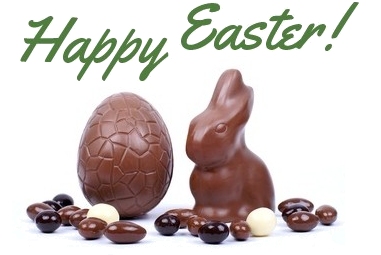
In France, church bells remain silent between Thursday and Saturday during Holy Week. Supposedly they have left for Rome, from whence they return during the night of Saturday to Sunday morning, scattering behind them sweets for children. On Easter Sunday, following the traditional Easter mass and the Easter egg hunt in local gardens, families will sit down together to a meal of roast lamb. In some French regions, people say that the Easter rabbit brings eggs and places them in the ‘nests’ made by local children the night before.
The Easter brioche cake is called the ‘Colomba di Pasqua’ in Italy, a cake in the shape of a dove, symbol of the Good News of Easter. Roast lamb is also enjoyed on Easter Sunday lunch, whilst on Easter Monday, families will often go out for picnics.
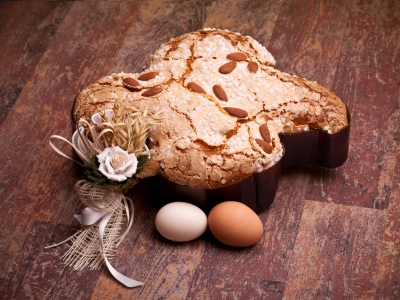
‘Colomba di Pasqua’ in Italy |
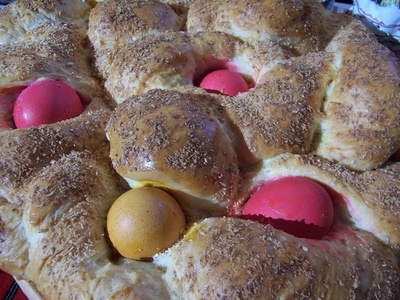
Spain’s Easter Cake 'Mona' |
In Spain and Portugal, Maundy Thursday, Good Friday and Easter Monday are public holidays.
Spain’s Easter cake is the Mona de Pascua, a brioche-style cake which is sometimes decorated with painted or chocolate eggs. Processions and street performances, prepared months in advance, are put on during Holy Week.
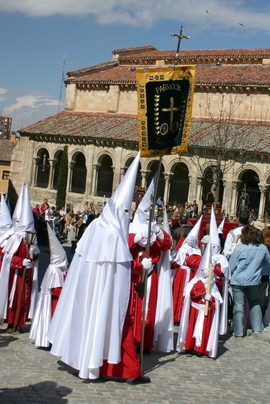
|
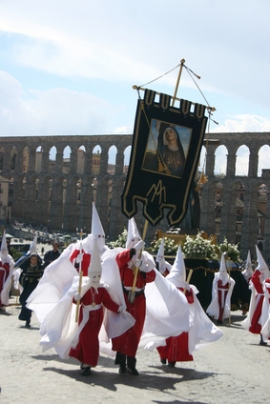
|
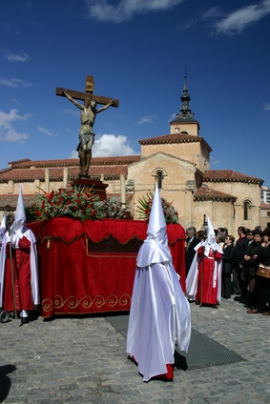
|
In the United Kingdom, pork, rather than lamb is often served at Eastertime, the pig being a symbol of good fortune for the British. Easter eggs are also an integral part of the celebrations and games are sometimes organized for children and adults alike. In some parts of the United Kingdom, children will go from house to house in search of sweets, rather like they do at Halloween.
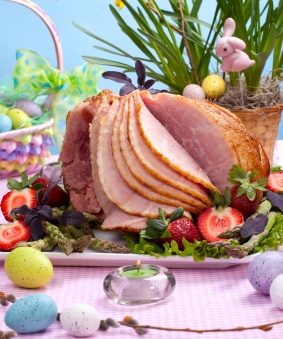
Easter Ham
In Finland children also call on homes in the neighbourhood. Dressed up as old women or witches, they receive gifts of sweets and chocolates. The tradition of Easter witches, called Virpominen, derives from an ancient myth that recounted how trolls and witches would go out and about between Good Friday and Easter Sunday. This legend already existed in Sweden over a 100 years ago.
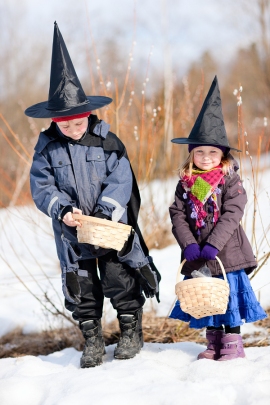
|
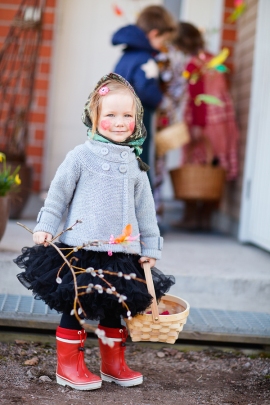
|
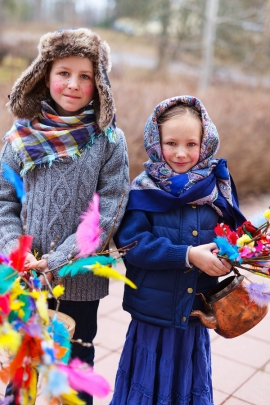
|
Other myths grew up in Scandinavian countries. For instance, it is said that you should get up early on Easter in order to see the sun dancing. Actually, the sun’s yellow is the colour used in Easter decorations in Norway, Sweden and Denmark.
Other symbols are common in Poland. Water, the symbol of life, is very much part of the celebrations. On Easter Monday friends will throw water over each other, symbolizing their sins being washed away. This Monday is called "Smigus Dyngus", wet Monday. "Wielkanoc" (literally, "the great night") is also a time to show off Easter eggs which have been painted or decorated with lengths of wool.
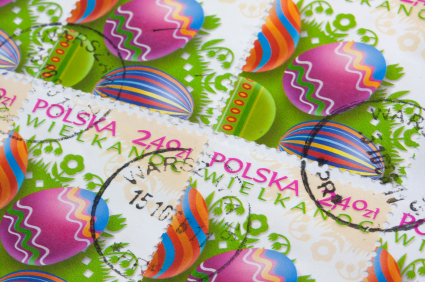
Polish stamps celebrating Easter |
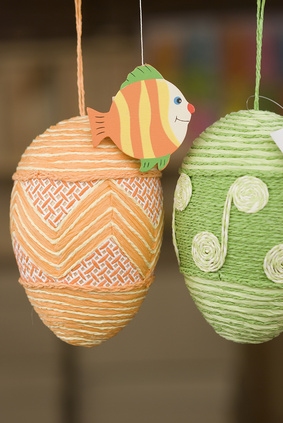
Easter eggs decorated with wool |
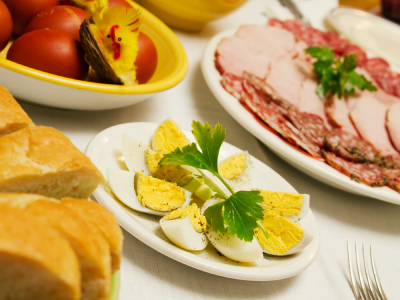
Traditional Polish Easter meal |
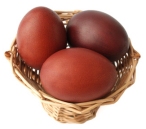
Eggs are also to the forefront in Russia. They are painted or decorated as per an old tradition in which they are boiled with onion skins – this gives the shells a nice red-brown colour.
Russians enjoy lamb cooked in butter or oven-cooked ham. For dessert, they eat "kulich" (a cake containing rum and saffron) and "paskha" (a dish made of farmers’ cheese).
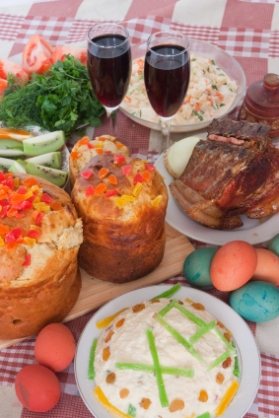
Easter meal in Russia |
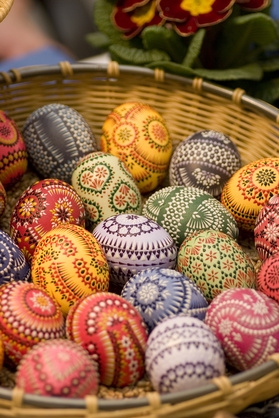
Decorated Russian eggs |
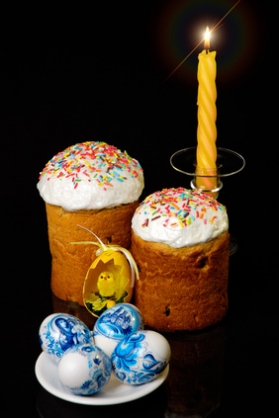
Easter Bread (Kulich) |
Eggs and lamb are also to be found in Greece, where the family will get round the table for lamb offal soup, which includes the heart and lungs of the lamb which is to be roasted for the main Easter meal.
Each guest tries to break their neighbour’s egg using just three fingers. These eggs are painted red, symbolizing Christ’s blood spilt on the cross.
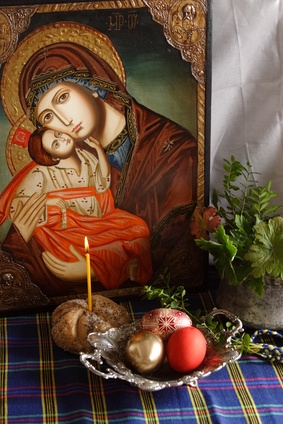
Greek Orthodox Easter |
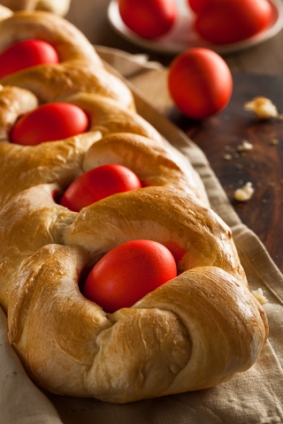
Greek Easter Bread (Tsoureki) |
In Germany, young and old gather round the Easter fire once night falls. The Easter fire is a very old German tradition. A symbol of the sun, it celebrates the advent of spring and the end of the cold weather. Here, hares or rabbits are supposed to bring chocolate eggs to drop them into the nests specially prepared for them by children.
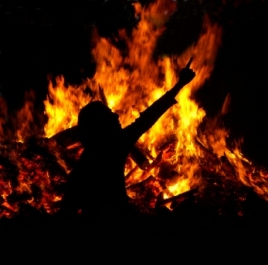
|
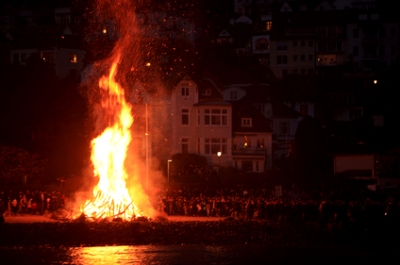
|
Another German custom, « Osterbaum », is a shrub or tree decorated with painted eggs, rather like fruit, heralding the return of warmer times.
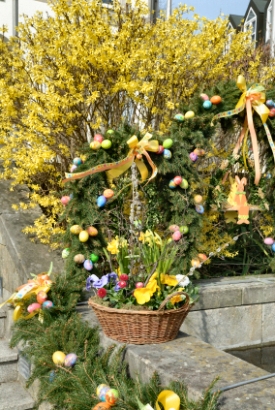
|
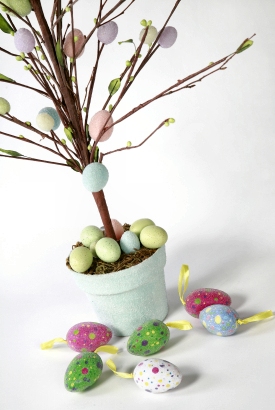
|
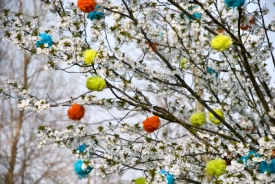
|
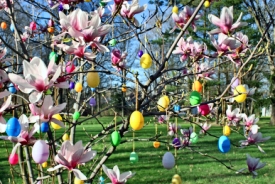
|
In the United States, the Easter Bunny brings children presents of chocolate, sweets and marshmallows.
On Easter Monday, a giant Easter egg roll is organized by the US President on the White House lawn.
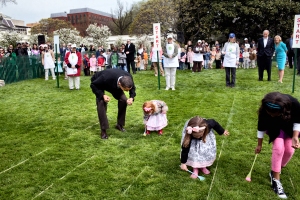
|
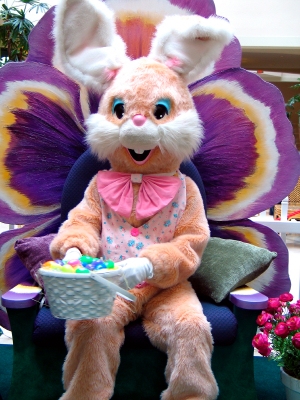
|
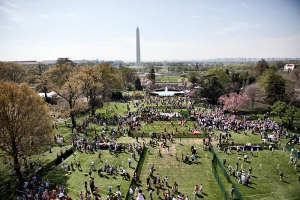
|
Australians have been trying for years to combat a rabbit population explosion that is causing considerable damage all across the country. As a result, efforts are underway to replace the Easter rabbit with the Easter bilby.
This small, large-eared marsupial is slowly becoming an Easter symbol in Australia. Bilbies are an endangered species in Australia, and chocolate bilbies are more and more frequently seen in the windows of confectioners. The sale of these bilbies helps raise both children’s awareness of the bilby’s plight and funds that go towards conservation efforts.

|
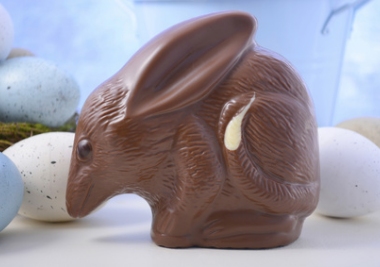
|
Easter Island
As we can see, Easter is celebrated the world over. There is also a small island, lost in the midst of the Pacific Ocean, very far from the nearest inhabited land, which bears the name of this festival.
The island of Rapa Nui, to the east of Australasia, is NOT called Easter Island because there are Easter eggs hidden amongst its mysterious stone statues. It owes its name to the fact it was discovered by Jakob Roggeven on Easter day 1722...
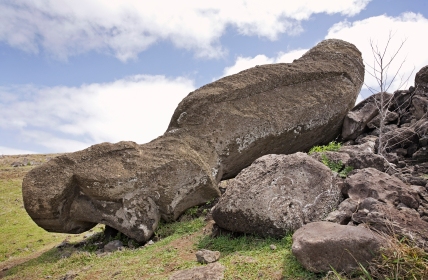
|
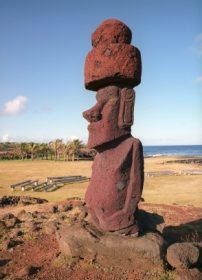
|
Sponsored Link

